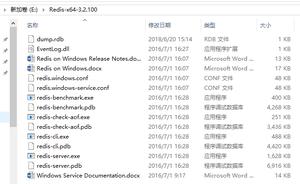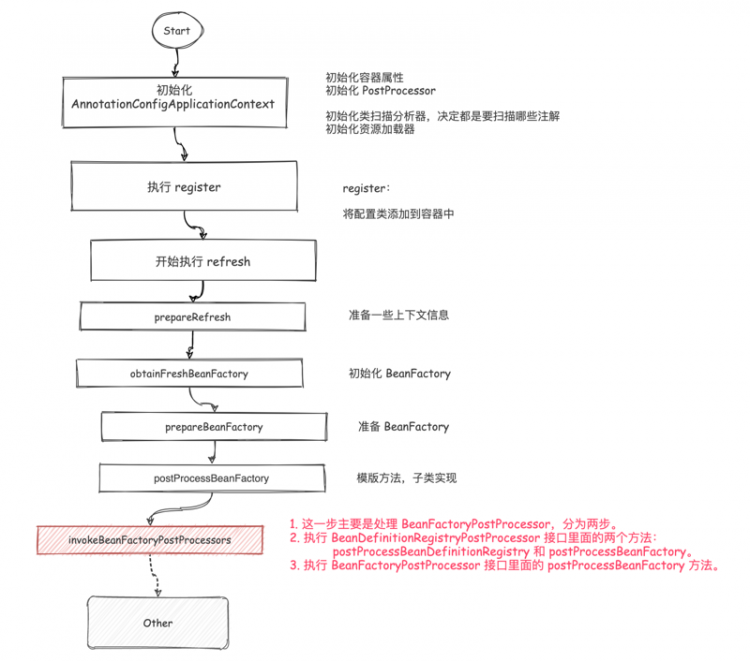了解spring @Configuration类
在理解“ Spring @Autowired用法”这个问题之后,我想为弹簧接线的另一个选项(@Configuration类)创建一个完整的知识库。
假设我有一个看起来像这样的spring XML文件:
<?xml version="1.0" encoding="UTF-8"?><beans xmlns="http://www.springframework.org/schema/beans"
xmlns:xsi="http://www.w3.org/2001/XMLSchema-instance"
xsi:schemaLocation="http://www.springframework.org/schema/beans http://www.springframework.org/schema/beans/spring-beans-3.0.xsd">
<import resource="another-application-context.xml"/>
<bean id="someBean" class="stack.overflow.spring.configuration.SomeClassImpl">
<constructor-arg value="${some.interesting.property}" />
</bean>
<bean id="anotherBean" class="stack.overflow.spring.configuration.AnotherClassImpl">
<constructor-arg ref="someBean"/>
<constructor-arg ref="beanFromSomewhereElse"/>
</bean>
</beans>
我该如何使用@Configuration呢?它对代码本身有影响吗?
回答:
将XML迁移到 @Configuration
@Configuration只需几个步骤即可将xml迁移到:
- 创建一个带
@Configuration注释的类:
@Configurationpublic class MyApplicationContext {
}
- 为每个
<bean>标签创建一个方法,其注释为@Bean:
@Configurationpublic class MyApplicationContext {
@Bean(name = "someBean")
public SomeClass getSomeClass() {
return new SomeClassImpl(someInterestingProperty); // We still need to inject someInterestingProperty
}
@Bean(name = "anotherBean")
public AnotherClass getAnotherClass() {
return new AnotherClassImpl(getSomeClass(), beanFromSomewhereElse); // We still need to inject beanFromSomewhereElse
}
}
- 为了导入,
beanFromSomewhereElse我们需要导入它的定义。可以用XML定义它,我们将使用@ImportResource:
@ImportResource("another-application-context.xml")@Configuration
public class MyApplicationContext {
...
}
如果bean是在另一个@Configuration类中定义的,则可以使用@Import注释:
@Import(OtherConfiguration.class)@Configuration
public class MyApplicationContext {
...
}
- 导入其他XML或
@Configuration类之后,可以通过在@Configuration类中声明私有成员来使用它们在上下文中声明的bean ,如下所示:
@Autowired@Qualifier(value = "beanFromSomewhereElse")
private final StrangeBean beanFromSomewhereElse;
或者用它直接作为在其中定义了取决于该豆的方法参数beanFromSomewhereElse使用@Qualifier如下:
@Bean(name = "anotherBean")public AnotherClass getAnotherClass(@Qualifier (value = "beanFromSomewhereElse") final StrangeBean beanFromSomewhereElse) {
return new AnotherClassImpl(getSomeClass(), beanFromSomewhereElse);
}
- 导入属性与从另一个xml或
@Configuration类导入bean非常相似。除了使用,@Qualifier我们将使用@Value以下属性:
@Autowired@Value("${some.interesting.property}")
private final String someInterestingProperty;
这也可以与SpEL表达式一起使用。
- 为了允许spring将此类视为bean容器,我们需要通过将以下标记放在上下文中在主xml中对其进行标记:
<context:annotation-config/>现在,你可以导入@Configuration与创建简单bean完全相同的类:
<bean class="some.package.MyApplicationContext"/>有一些方法可以完全避免使用Spring XML,但是它们不在此答案的范围内。你可以在我基于其答案的博客文章中找到这些选项之一。
使用此方法的优缺点
基本上,由于一些优势,我发现这种声明bean的方法比使用XML更舒适。
Typos - @Configuration类已编译,拼写错误将不允许编译Fail fast (compile time)-如果你忘记注入Bean,则会在编译时失败,而不是像XML那样在运行时失败Easier to navigate in IDE-在bean的构造函数之间了解依赖关系树。- 可以轻松调试配置启动
正如我所看到的那样,缺点并不多,但我可以想到一些缺点:
- 滥用 -代码比XML更容易滥用
- 使用XML,你可以基于在编译时不可用但在运行时提供的类定义依赖项。使用
@Configuration类时,必须在编译时提供可用的类。通常这不是问题,但是在某些情况下可能是这样。底线:在你的应用程序上下文中结合XML
@Configuration和注释是完全可以的。Spring并不关心使用bean声明的方法。
以上是 了解spring @Configuration类 的全部内容, 来源链接: utcz.com/qa/421008.html







